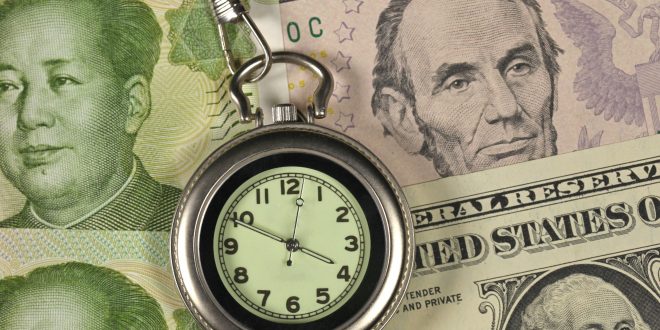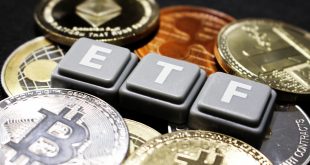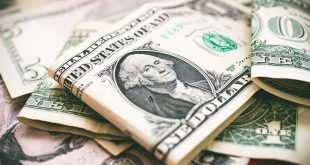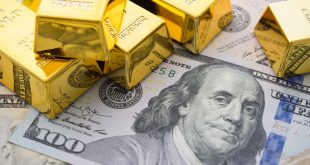Wall Street rose on Friday, with the Nasdaq index posting its biggest quarterly percentage gain since June 2020, after signs of easing inflation raised hopes that the Federal Reserve would soon end its aggressive campaign to raise interest rates.
The Standard & Poor’s 500 Index posted gains for the second quarter in a row, led by the technology sector, which rose more than 20 percent.
Inflation in the US, as measured by the Personal Consumption Expenditures (PCE) Price Index, declined to 5% on a yearly basis in February from 5.3% in January, the US Bureau of Economic Analysis reported on Friday. This reading came in lower than the market expectation of 5.3%.
The annual Core PCE Price Index, the Federal Reserve’s preferred gauge of inflation, edged lower to 4.6% from 4.7% in the same period, compared to analysts’ forecast of 4.7%. On a monthly basis, Core PCE inflation and PCE inflation both rose 0.3%.
Further details of the publication revealed that Personal Income rose by 0.3% on a monthly basis in February and Personal Spending increased by 0.2%.
Forex
The dollar rose against the euro on Friday, but it is heading for a fifth consecutive week of losses against the European currency, after the decline in consumer spending growth in the United States boosted hopes that the Federal Reserve will slow down the pace of raising interest rates.
US consumer spending rose modestly in February after rising sharply in the previous month. While the pace of inflation has slowed, it is still high, which may prompt the Federal Reserve to raise interest rates again this year.
The euro fell 0.48% to $1.0852, but it rose 0.8% on a weekly basis, achieving gains for the fifth consecutive week against the dollar.
The Australian and New Zealand dollars fell 0.45% and 0.1%, respectively, after data showed a slowdown in industrial activity growth in China in March, which raises doubts about the strength of factory recovery after the Covid-19 pandemic in light of weak global demand and stagnant real estate market.
Sterling fell 0.4 percent on Friday to $1.2337.
Bitcoin rose 1.1% to $28,340.
Oil
Oil prices rose more than $1 a barrel on Friday, posting gains for the second week in a row, as supplies fell in some parts of the world and inflation data in the United States showed some signs of a slowdown in price rises.
Brent crude futures for June delivery rose $1.29, or 1.6 percent, to settle at $79.89 a barrel. Brent contracts for May delivery, which expired at settlement, rose 50 cents, or 0.6 percent, to $79.77 a barrel.
US West Texas Intermediate crude for May delivery rose $1.30, or 1.8%, to $75.67, taking its gains nearly nine percent this week.
Friday’s data showed the personal consumption expenditures price index in the United States rose 0.3 percent in February on a monthly basis, compared to an increase of 0.6 percent in January and expectations of a 0.4 percent increase in a Reuters poll.
Oil prices are usually boosted by any sign of slowing inflation, which may point to smaller interest rate hikes from the Federal Reserve, which raises investor demand for riskier assets such as commodities and stocks.
Oil prices rose after oil production in several oil fields in the semi-autonomous Kurdistan region in northern Iraq was halted or reduced following the suspension of oil exports through a pipeline in the north of the country.
Sources said the Organization of the Petroleum Exporting Countries (OPEC) and its allies led by Russia are likely to maintain compliance with the current production agreement at Monday’s meeting as oil prices recover from recent lows.
A Reuters survey revealed that OPEC pumped 28.90 million barrels per day this month, which is a decrease of 70 thousand barrels per day compared to February. Production decreased by more than 700 thousand barrels per day compared to September.
Despite Friday’s gains, Brent and West Texas Intermediate crude recorded monthly declines of 5% and 2% respectively, their biggest drop since November.
Brent crude settled lower for the third consecutive quarter, the first time this has happened since 2015.
Gold
Gold prices are heading for a second consecutive quarterly gain on Friday, as investors flocked to the precious metal, with bets mounting that the Federal Reserve will slow the pace of interest rate hikes.
And by 1615 GMT, spot gold fell 0.2 percent to $ 1977.32 an ounce, after rising 0.4 percent in the wake of data that showed a modest rise in consumer spending in the United States in February.
US gold futures fell 0.1 percent to $1,977.80.
The US dollar rose on Friday, limiting demand for gold denominated in the US currency.
Gold crossed the $2,000 level after the sudden collapse of two US banks earlier in the month, raising bets that the Federal Reserve might stop raising interest rates to avoid wider repercussions from the global banking system turmoil.
Among other precious metals, spot silver rose 0.9 percent to $24.1 an ounce, platinum also rose 0.9 percent to $994.89, and palladium rose 0.6 percent to $1,473.25.
 Noor Trends News, Technical Analysis, Educational Tools and Recommendations
Noor Trends News, Technical Analysis, Educational Tools and Recommendations





